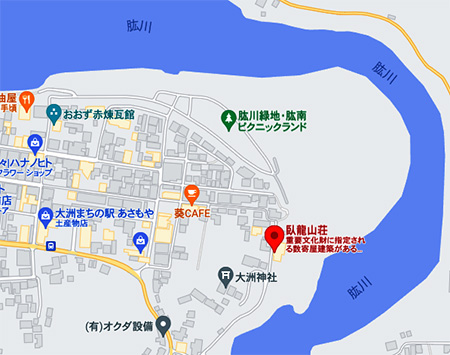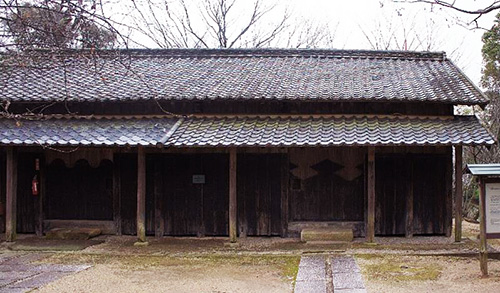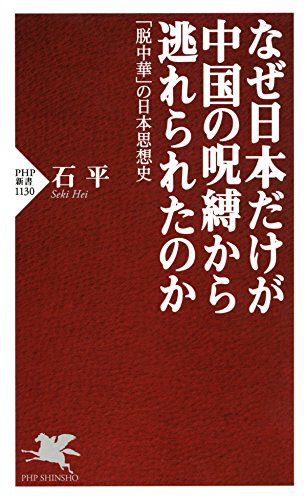


こちらは茶室建築「知止庵」であります。
命名由来は江戸期の大名家・加藤氏の殿様の扁額文字。
「知止」の扁額は大洲藩第10代藩主加藤泰済筆。陽明学者中江藤樹の教えから
庵名が生まれた。壁の腰張は皇室の名代を徳川家で迎えるとき、
接待役を勤めた第3代藩主藩泰恒の「茶方日記」の反古だという。
反古だけれどそういう「由緒正しい」ものを使うということで、
茶室としての「格式」を高めたということか。
中江藤樹という人物について特段の興味はなかったのですが、
日本陽明学の祖として、また藩主加藤家仕官の経緯もあったようです。
知行合一を説き,実践を重んじる考えが一般的理解。
この茶室自体は明治時代の再建築で臥龍山荘を作った河内寅次郎の子孫が
昭和24年というから戦後になって浴室だったモノを改造したという。
とすれば、そういう由緒ある扁額や文書を地元宝物として河内家が入手し
この茶室建築に使ったということになる。
止、という漢字は茶室では比較的に使われているように思う。
ただ、ふつうは「欲望を止める」みたいな禅的意味合い。
茶室への命名として、由来をこのように求めたこと自体はわかったけれど
どうも陽明学者中江藤樹の言葉と茶室命名には関連性が薄いと思われてならない。
行動を重視して一種の警句として「知を止めよ」ということなのだろうか。
学者が「知ることを止める」のは一種の自己抑制的な響きも感じるけれど
それを第3者が引用命名することにはやや違和感がある。
結果、わたし的には意味微妙の茶室と思えた次第。
「知ることを止める」ことに普遍性があるとはどう考えても思えない。
そもそも知ることとは人間に本然としてある前向きな考えそのもの。
反人間宣言というのに等しいのではないかと、内心の強い反発。
それが茶室のメインメッセージであるのなら、どうも同意しにくい。
茶室がひとを惹き付けるのは、
その会所としての精神性ということも大きい部分ではないだろうか。
ひょっとして利休という茶の巨人の「利」を「休む」というような
イメージを掛詞のように使ったのか。
商人であった利休さんが、「利」を「休む」のと同じに
知識人・学者である中江藤樹が「知」を「止める」と掛けたのだろうか。
そうだとしても中江藤樹自身とこの茶室の繋がりが不可欠ではないか。
建築命名については普遍性をよく吟味するべきだと思う。
まぁ、個人の命名印象であるので建築鑑賞とは別次元ではありますが・・・。
English version⬇
[Delicate tea room name “Chishi-an” Garyu Sanso ⑤ Shikoku living space exploration-23]
This is the tea room architecture “Chishi-an”.
The name comes from the flat letters of the lord of the Edo period daimyo, Mr. Kato.
The flat frame of “Chishi” is written by Yasushi Kato, the 10th feudal lord of the Ozu domain. From the teachings of Yangming scholar Nakae Toju
The hermitage name was born. When the Tokugawa family welcomes the imperial family’s name, the waist of the wall
It is said to be an antique of the “Chakata Diary” of the third feudal lord, Yasutsune, who served as an entertainer.
It ’s anti-old, but by using that kind of “historical” thing,
Does it mean that the “formality” of the tea room has been enhanced?
I wasn’t particularly interested in the person named Toju Nakae,
It seems that he was the ancestor of Japanese Yangmingism and also had a background as a feudal lord of the Kato family.
A general understanding is the idea of preaching the union of wisdom and emphasizing practice.
This tea room itself is a descendant of Torajiro Kawachi, who built Garyu Sanso in the reconstruction of the Meiji era.
Since it was 1945, it is said that the thing that was a bathroom was remodeled after the war.
If so, the Kawachi family obtained such venerable biane and documents as local treasures.
It means that it was used for this tea room construction.
I think the Chinese character “stop” is relatively used in the tea room.
However, it usually has a Zen meaning like “stopping desire”.
As a name for the tea room, I understand that I asked for the origin in this way.
Apparently, the words of Yangming scholar Nakae Toju and the naming of the tea room should not seem to be closely related.
Is it a kind of epigram that emphasizes behavior and says “stop knowledge”?
Although scholars “stop knowing” feels a kind of self-restraining sound.
It seems a little strange for a third party to quote and name it.
As a result, I thought it was a tea room with a delicate meaning.
I don’t think there is universality in “stopping knowing”.
In the first place, knowing is the very positive idea that human beings have.
There is a strong inward repulsion that it may be equivalent to an anti-human declaration.
If that is the main message of the tea room, it’s hard to agree.
What attracts people to the tea room is
Isn’t the spirituality of the meeting place a big part?
Perhaps it’s like “resting” the “Ri” of the tea giant Rikyu.
Did you use the image like a kakekotoba?
Just like Rikyu, who was a merchant, “rests” on “Ri”
Did Toju Nakae, an intellectual and scholar, call “stop” “knowledge”?
Even so, the connection between Nakae Toju himself and this tea room is indispensable.
I think we should carefully examine the universality of architectural naming.
Well, it’s an individual naming impression, so it’s a different dimension from architectural appreciation.
Posted on 3月 10th, 2022 by 三木 奎吾
Filed under: 住宅マーケティング, 日本社会・文化研究 | No Comments »

































